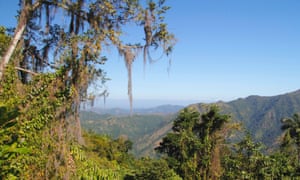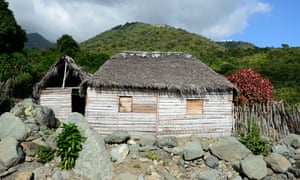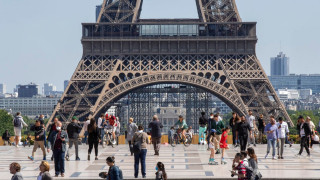
A spectacular and dangerous trek up Pico Turquino reveals a side of the island often overlooked

Fireflies appeared like sprites in the forest when we were still a long way from home. The sun had gone down in a burst of brilliance over the mountains, including the thickly wooded slope where, 61 years ago, Fidel Castro and a small band of guerrillas had taken refuge to prepare a revolution. Darkness was stealing through the trees, exquisite but frightening.
It had taken us far longer to reach Cuba’s highest point – the 1,974-metre summit of Pico Turquino – than expected, and now with a moon that was little more than a sliver of a smile, we’d been caught on the mountain.
My girlfriend and I had driven 500 miles from Havana, gently southeast along almost three-quarters of the island. It’s a journey where a sidewards glance can make you feel like you are in the late 1800s, what with the horse-drawn buggies, the campesino farmers in sweat-rotted straw hats and the clapboard houses.
We passed through Santa Clara, where children take rides round the town square in a shrunken version of a horse-drawn carriage pulled by a billy goat. And Camaguey, where the citizens carry themselves with the dignity of cattle ranchers. On the road, we passed a rusting truck releasing thousands of racing pigeons.

Come the third night, we headed south and mountains rose out of the rice paddies. Finally we reached Santa Domingo, a farming village in the eaves of deeply wooded slopes. It’s the main access point to the Sierra Maestra from the north.
I’m not sure where the idea to climb the mountain had come from, perhaps it was because it’s a rite of passage for Cubans and my girlfriend had never done it. Looking up was daunting so instead we sought out our cabin at the government-run Villa Islazul. Built in the 1980s, it was set next to a beautiful babbling brook. Not that we’d know; the hut had no windows and just one bright overhead light, but it was a paradise compared to what was coming.
Before heading for the mountain itself, we visited the comandancia where in 1958 Fidel, Che and Celia Sánchez hid out, an easy hour-and-a-half walk from the road-head (a road that wasn’t built back then). We peered into the various wooden buildings hidden under the trees. I imagined the rebels listening to the bombers flying over.

As we turned towards the mountain, we were joined by a hummingbird and a Cuban fellow walker made one of those little quips that indicates the revolutionary fervour has dimmed a little. “Yes, Cuba,” he said. “Home to world’s smallest orchids, hummingbirds, butterflies and wages.”
La Platica, where we put up, is magical. From a terrace where a rooster is in a perpetual territorial conflict with two cats, we looked out on the most perfect tree fern. Plain food was cooked on open fires. But in its lack of comfort, it challenged my love of the rustic. In the morning, while eating a breakfast of unidentified fried objects, one of the cats emerged from our bunkroom with a rat. Companionably, it decided to eat it beside us.
At 7.30am we started to climb, our guide now Miguel Gonzalez Garcia. His great-grandfather had been one of seven farmers summarily executed to discourage others from helping Fidel’s rebels. We followed the trail between wild banana trees and under soaring royal palms, as Miguel played Name That Tune, the most beautiful of which was that of the solitaire, or Cuban nightingale. He also pointed out the bijirita, a black-throated blue warbler, and the famed national bird, the tocororo. The last appeared in the high tops, in its smart red, white and blue outfit.

At lunchtime we stopped at the refuge where we would sleep that night for a quick lunch of tuna, rice and beans, and then ploughed on, starting with a climb up one of Pico Turquino’s little sisters, rising nearly 1,000ft in less than half a mile. In all, the day would see us walk 11 miles, which doesn’t seem so bad until you’ve faced the path’s rickety ladders, its every treacherous, rocky, cliff-edged step. The park staff have planted signs to encourage walkers on. One reads, Arriba Corazones – Arise Hearts.
With each footfall, we pushed further into cloud forest and the view, already heart-stopping in its scale, became greater still. In chill air unlike any I’ve known in Cuba, I watched the east open up to reveal the Caribbean thousands of feet below.
Still on we went, following a ridge up and down over peak after peak, until a last brutal climb led us to the top. Absurdly, the thick forest means that at the very top there is no view, only a statue of the poet hero José Marti. We were too tired to celebrate. Instead we checked the time, and found it was now 5pm. After eating a chunk of what my girlfriend had sold to me as a great delicacy of the Camagüey region, and which turned out to be fudge, we hurried back down the trail, with three hard miles to cover before dark.

After the explosive sunset – a sight only a lucky fool sees from the top of a mountain – the light evaporated from under the forest canopy. As we picked out our path with increasing difficulty, I thought of Giselle, the ballet where fireflies are the spirits of women wronged in love, come to exact revenge. It stuck in my mind as Miguel guided us down the vertiginous, muddy and rocky steps by the light of a mobile phone, my girlfriend gently singing to calm her nerves.
We made it to the refuge, and then, the next day, down the mountain. To recover we drove two hours to the north, stopping in the picture-perfect coastal village of Gibara, not far from where Christopher Columbus landed in 1492. We ate octopus, drank piña coladas, listened to salsa and swam in the sea, so very grateful that we would never have to climb that mountain again.
The Guardian











Leave a comment